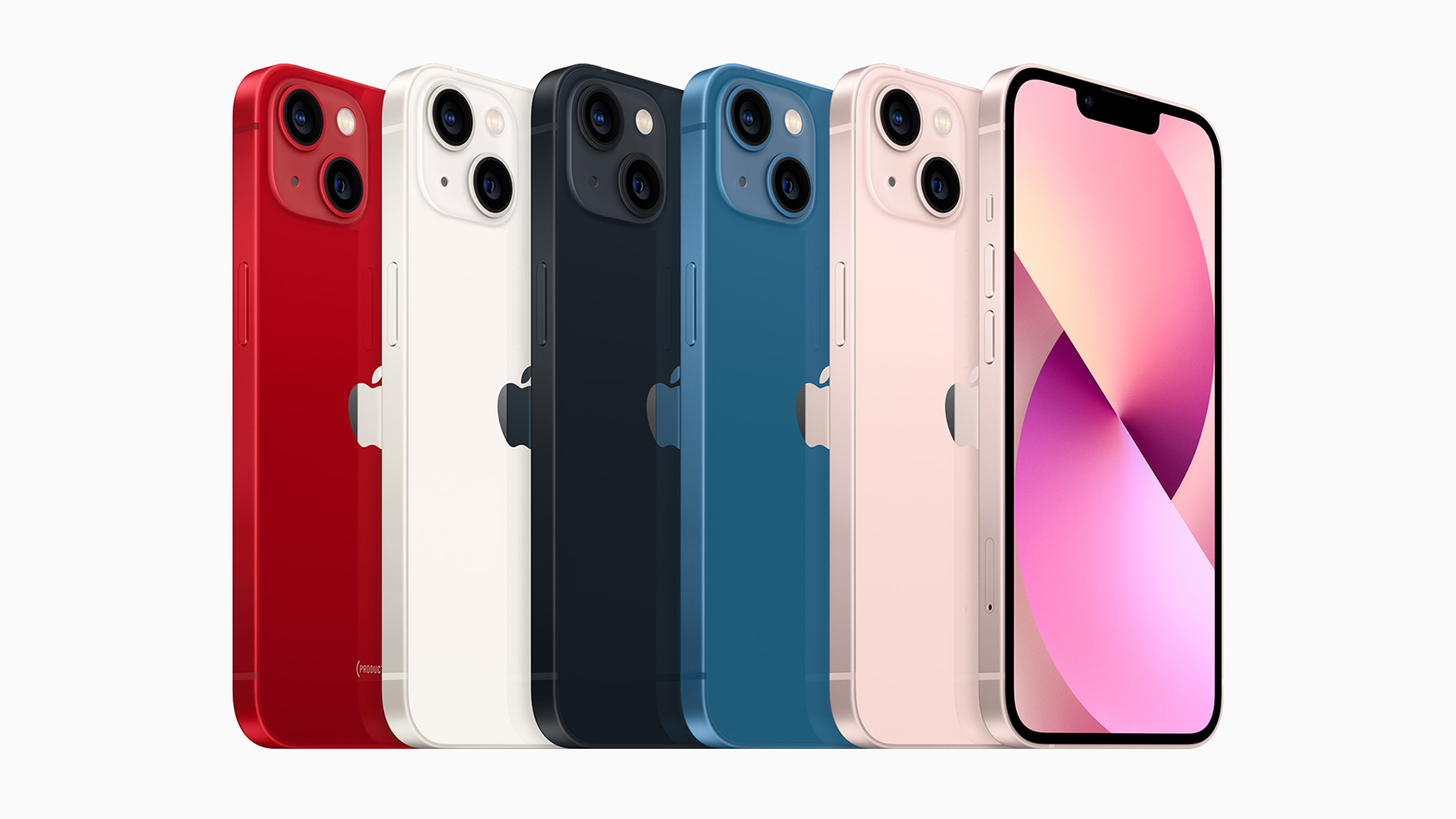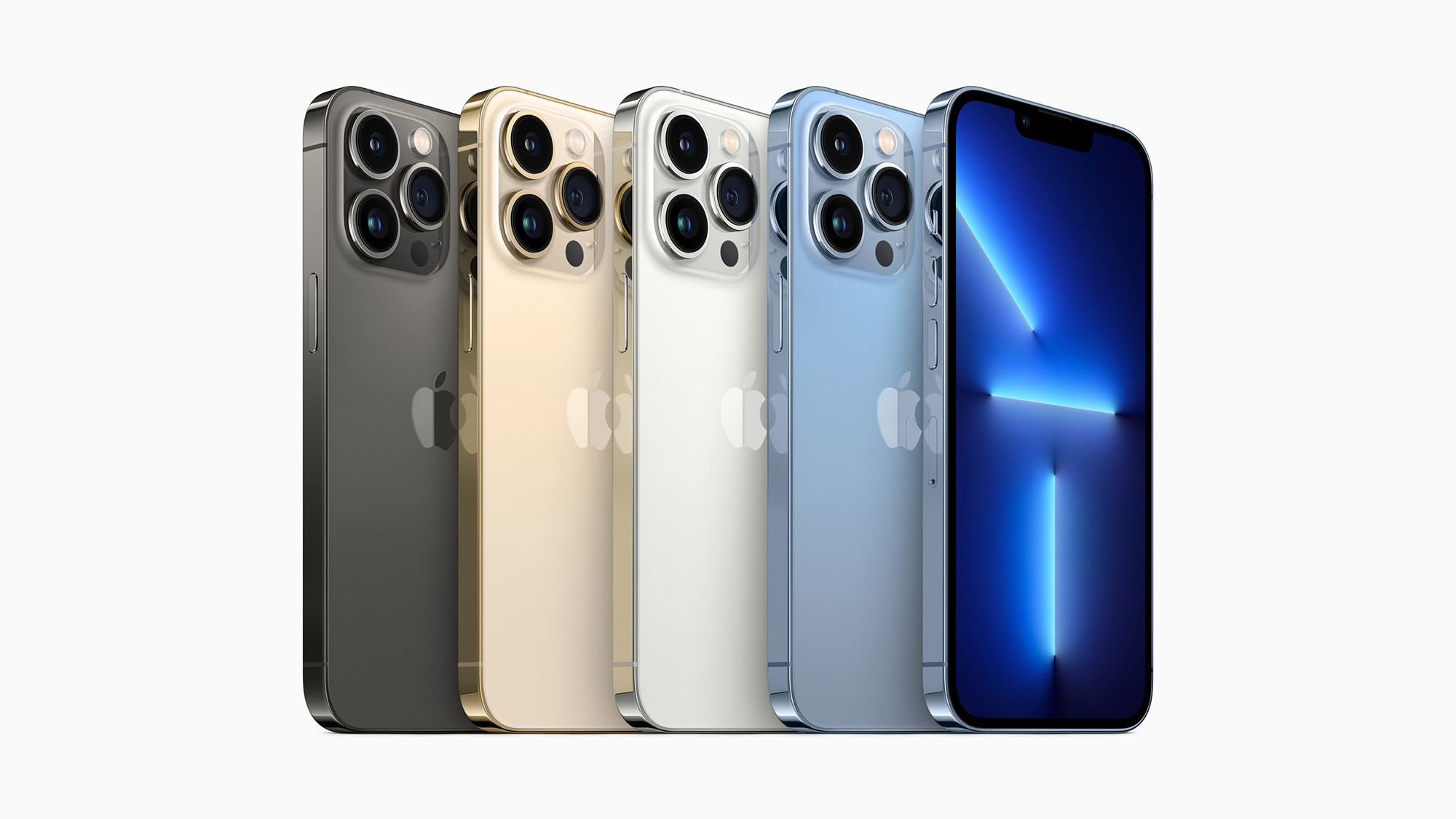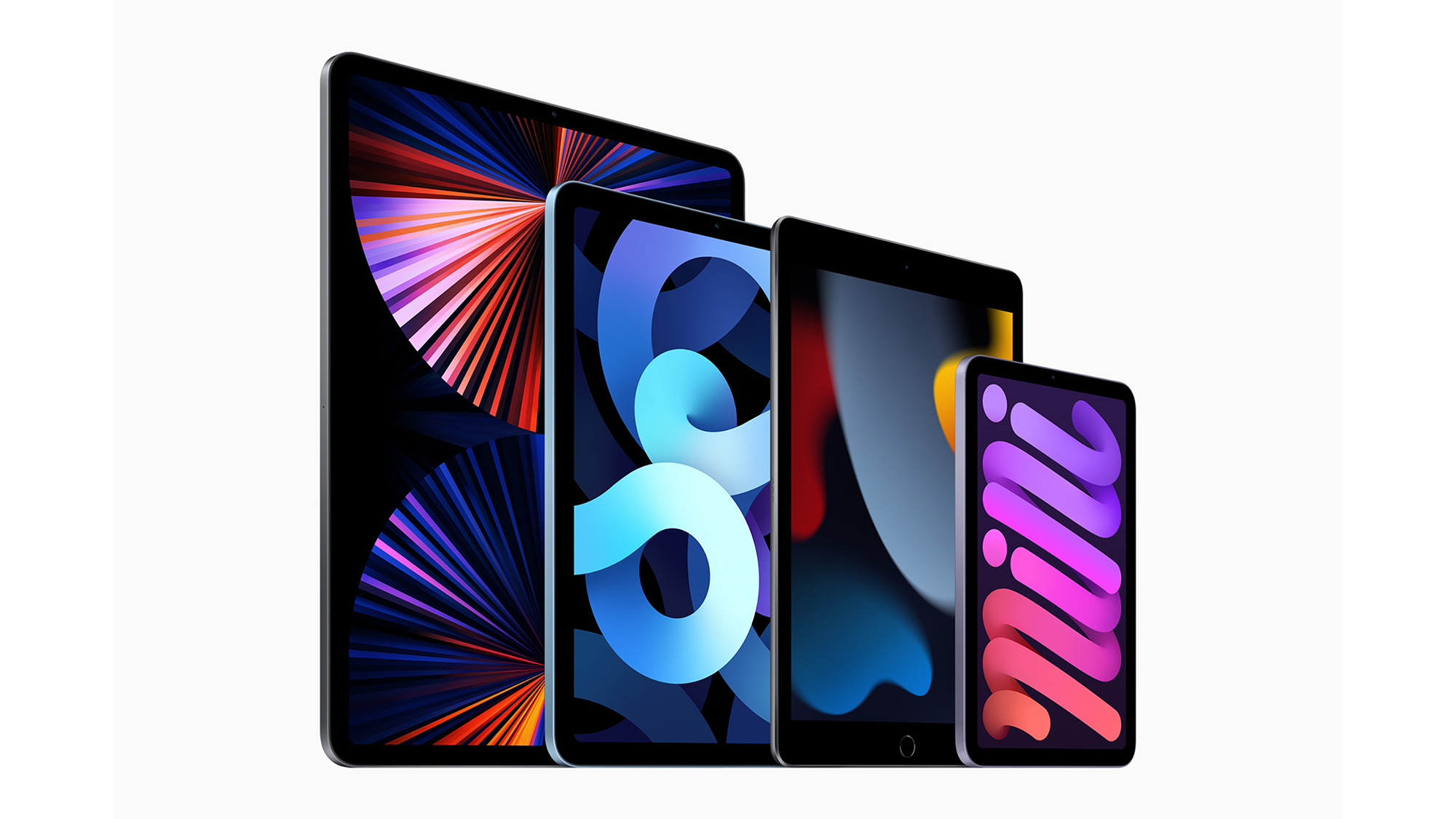Apple unveils iPhone 13, new iPad, and iPad mini
The new devices include updated processors, improved camera technology and several design tweaks


Apple today rolled out long-awaited updates to its iPhone and iPad units, along with a surprise announcement - a refreshed iPad mini.
Unveiled in a live streamed event from the company’s California headquarters, the new devices include updated processors, improved camera technology and several design tweaks aimed at making them more portable and more versatile than previous models.
Apple iPhone 13
Like the iPhone 12, the iPhone 13 series comes in regular and Pro versions, each with smaller and larger formats - the iPhone 13 mini for the standard model, and the iPhone 13 Pro Max at the top end.
The iPhone 13’s 6.1in OLED display (along with the 13 mini’s 5.4in screen) is almost 30% brighter than the iPhone 12, offering a brightness of 800cd/m2 in regular use (up from 625cd/m2), with a peak brightness of 1200cd/m2 in certain situations. It also sports a tougher cover. Users will get to see more of the display too, thanks to a 20% reduction in the size of the notch housing the front sensor array.
The flagship Pro unit comes in regular and ‘Max’ sizes, featuring respective 6.1in and 6.7in displays. A new Super Retina XDR display offers 1000cd/m2 of peak outdoor brightness.
The Pro series also offers an adaptive refresh rate feature called ProMotion. First seen on the iPad Pro, it refreshes up to 120Hz, dynamically adjusting refresh rates based on content and activities. It will change refresh rates to match scrolling speed which, according to the company, saves on battery life.
Under the hood, the range features an upgraded processor; the A15 Bionic is a 5nm process chip like the A14 unit in the iPhone 12. Like the A14, it features six CPU cores, two of which are high-performance units, and a four-core GPU. However, these cores are all faster than their predecessors, as is the chip's 16-core neural processor, which the company says can process 15 trillion operations per second. The processor also includes a larger system cache.
Get the ITPro daily newsletter
Sign up today and you will receive a free copy of our Future Focus 2025 report - the leading guidance on AI, cybersecurity and other IT challenges as per 700+ senior executives

These updated processors will be powered by bigger batteries. According to Apple, the iPhone 13 mini’s battery will last 1.5 hours longer than the previous generation, while the full-sized unit will deliver 2.5 hours more than its predecessor. Similar battery improvements have been promised for the Pro models.
Photography has long been a key focus for Apple, and the iPhone 13 range features a dual-camera system with a larger sensor for better low-light shots. The Pro units, meanwhile, offer an even further upgraded camera package. It includes the same wide-angle, ultrawide and telephoto combination as the iPhone 12, but with enhanced specifications.
The telephoto offers 3x optical zoom, while the ultra-wide lens brings macro photography capabilities to the device for photos from as little as 2cm away. For the first time, all three cameras have night mode for low-light shooting, and all devices include sensor-shift optical image stabilisation for improved clarity.
The Pro series phones also include a new Photographic Styles feature, allowing users to adjust the tone of their photos at a global level, and intelligently apply the adjustments to all shots.
For videographers, all iPhone 13 devices now include Cinematic mode, which features automatic focus racking to dynamically refocus on different parts of the picture. Users can refocus manually, or the system can recognize what the subjects are doing and anticipate focal requirements.
There’s also support for the professional-grade ProRes Video format, adding to the Dolby Vision support introduced in last year’s devices. The A15 Bionic chip includes ProRes hardware acceleration, and combined with the 13 Pro and Pro Max’s ability to shoot in ProRes at up to 4K at 30fps, this is aimed squarely at creating professional-grade video content.
In terms of connectivity, Apple has enhanced the 5G capabilities first included in its iPhone 12, adding more 5G bands for better coverage. The various iPhone 13 models will all support over 200 carriers in 60 countries by the end of the year. There’s also Wi-Fi 6 support, IP68 water and dust resistance, and improved privacy protections via iOS 15.
The iPhone 13 mini starts at $699 (£679) while the full-sized unit costs $799 (£779). The Pro starts at $999 (£949), while the Pro Max starts at $1099 (£1,049). The iPhone 13 and 13 mini now feature a starting storage capacity of 128GB, while the Pro models include a new 1TB on-board storage option.
All the new iPhone models are available for ordering this Friday and will ship on September 24.
Apple iPad and iPad mini

Alongside the new iPhone family, Apple also showed off some updates to its range of tablets, in the form of a refreshed entry-level iPad and a newly-redesigned iPad mini.
The 2021 iPad features an A13 Bionic CPU that’s 20% faster than the last generation, along with an enhanced neural chip and image signal processor for better low-light photographs. Apple also upgraded the front camera on both units to a 12-megapixel unit with a 122-degree field of view. This enabled it to add Centre Stage, a feature that follows the user around the room.
The new iPad mini, meanwhile, has been significantly overhauled. The company claims a 40% jump in CPU performance and an 80% jump in GPU speed thanks to the new model’s A15 Bionic chip, which provides a sorely-needed update from the last version released in 2019.
The display has been upgraded too, with a promise of 500cd/m2 brightness, as well as an anti-reflective coating, DCI-P3 colour gamut and Apple’s True Tone technology. The company also boosted the screen size to 8.3in from its previous 7.9in without changing the unit's dimensions. To do this, it reduced the bezel size and moved its biometric TouchID sensor to the power button, and its appearance is now reminiscent of Apple’s iPad Air and iPad Pro models.
Just like its larger siblings, the mini also gets new connectivity capabilities in the form of a USB-C port, Wi-Fi 6 and 5G support. There’s also support for the second-generation Apple Pencil and landscape mode stereo speakers.
Both front and back cameras include 12MP sensors; the rear lens includes a wider f/1.8 aperture with a True Tone flash, while the front camera is an ultra-wide lens that supports the Centre Stage feature.
Starting with a 64GB storage capacity that doubles the previous generation, the 10.2in iPad starts at $329 (£319), while the mini starts from $499 (£479), with units shipping next week.
Danny Bradbury has been a print journalist specialising in technology since 1989 and a freelance writer since 1994. He has written for national publications on both sides of the Atlantic and has won awards for his investigative cybersecurity journalism work and his arts and culture writing.
Danny writes about many different technology issues for audiences ranging from consumers through to software developers and CIOs. He also ghostwrites articles for many C-suite business executives in the technology sector and has worked as a presenter for multiple webinars and podcasts.
-
 Westcon-Comstor and Vectra AI launch brace of new channel initiatives
Westcon-Comstor and Vectra AI launch brace of new channel initiativesNews Westcon-Comstor and Vectra AI have announced the launch of two new channel growth initiatives focused on the managed security service provider (MSSP) space and AWS Marketplace.
By Daniel Todd Published
-
 Third time lucky? Microsoft finally begins roll-out of controversial Recall feature
Third time lucky? Microsoft finally begins roll-out of controversial Recall featureNews The Windows Recall feature has been plagued by setbacks and backlash from security professionals
By Emma Woollacott Published